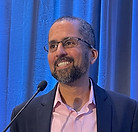
Track 2 Session Details
AFCC Conference Breakout Sessions
Breakout Sessions are 90 minutes, each one has one moderator with a maximum of four to five speakers.
Breakout sessions will be focused on the following five subject areas:
-
Track 2: Sustainable Feedstocks and Biofuels, Driving Decarbonization
-
Track 4: Synthetic Biology, Alternative Proteins, Regenerative Agriculture, Food & Fiber
-
Track 5: Building the Biobased Economy Supply Chain
Track 2 Breakout Session Details
Sustainable Feedstocks and Biofuels, Driving Decarbonization
This Track is Sponsored by:
Monday, November 17, 2025
All Track 2 sessions will be held in RiverView 2
Session 1: 8:00 AM to 9:30 AM: Recent Sustainable SAF and Maritime Partnerships for Producers, Developers, and Advanced Technology Providers

Moderator: Valerie Reed, Director of Bioenergy, DOE EERE, BETO
Speakers:




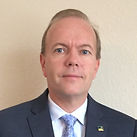
While the market for Sustainable SAF is still in its infancy, there is a huge opportunity today for producers, developers, advanced technology providers, feedstock suppliers, airlines and policymakers to work together to support its continued growth. Some of these are global and others are domestic, but in all instances are impactful and needs action. Success in reaching scale requires partnerships from producers, developers, technology providers, and end users, cost sharing through licensing agreements means either building new supply chains, modifying existing ones, or deploying existing ones for drop-in replacement for jet fuel and maritime. De-risking continues to be an issue for capital development. These panelists will disclose their recent partnerships and business arrangements taking them one step closer to commercialization.
Session 2: 10:00 AM to 11:30 AM: Woody Biomass Supply from Federal, State, Tribal and Private Forests

Moderator: Julie Tucker, National Program Manager, Wood Innovations, USDA Forest Service
Speakers:
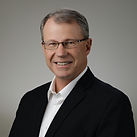

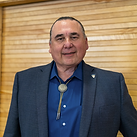


Vance Wright
Co-Owner, Charles A. Wright Logging Inc.
Partner, Sawmill Business
Need woody biomass feedstock? There is ample supply across the United States, but accessing it requires understanding how the woody biomass supply chain works. Woody biomass is at the nexus of many diverse government priorities, including several federal Executive Orders calling for an increase in timber production, wildfire resilience, and domestic energy production. The Renewable Fuel Standard creates woody biomass markets to produce biofuels and generate baseload biomass power at biofuels facilities. These very markets are key to advancing national, state, and tribal priorities to mitigate wildfire risk, promote sustainable forest management, strengthen national security, and increase timber production. The biofuels sector offers a unique opportunity for the U.S. to achieve national energy dominance with woody biomass whether it be with residuals generated by forest management activities or forest products manufacturing facilities. The panel will discuss issues and opportunities associated with accessing woody biomass feedstock on federal, state, Tribal, and PRIVATE lands.
Session 3: 1:30 PM to 3:00 PM: Production of Renewable Natural Gas (RNG), Green Hydrogen, Biogenic Methanol and Torrefaction

Moderator: Jeff Bechdel, Managing Director, FTI Consulting
Methodologies such as renewable natural gas (RNG), green hydrogen processing, biogenic methanol, and torrefaction can be engineered to decarbonize and produce biofuels. RNG and hydrogen are both considered pathways to decarbonization, but they have different characteristics and applications. RNG as a biogas which can be used interchangeably with conventional natural gas, while hydrogen is a clean-burning fuel with the potential to replace fossil fuels in various sectors. The panelists will present their processes, and end use showcasing multiple applications to produce bioenergy.
Thor Gallardo, Sr. Business Development Manager, KBR
Green Methanol Production Economics in the Pulp and Paper Industry
Most of the Kraft pulp and paper industry uses wood waste combustion in specialized boilers, also known as power boilers, to produce steam for its processes. The emission from these boilers is also green since the carbon originates from the wood and wood waste used in the Kraft plant. If we combine hydrogen made from renewable or excess power from the steam turbine generator plus CO2 captured from the flue gases of the boilers, biogenic low carbon intensity methanol can be produced. This study explores the potential of integrating a compact carbon capture and utilization (CCU) technology with green methanol technology in a Kraft plant. We employed electrolyzer vendor data, plus in house data for KBR Carbon Capture rotating packed bed technology KCap and KBR Methanol technology PureM to evaluate the feasibility and costs of capturing CO2 emissions from pulp and paper mills and converting them into green methanol. The levelized costs of each step of the process from green hydrogen, captured CO2 and green methanol is presented. The effect of fuel incentives and carbon taxes are also evaluated. The results indicate that the implementation of CCU in the pulp and paper industry is feasible and is an excellent and abundant source of biogenic carbon for producing low carbon or fossil free fuels.
Session 4: 3:30 PM to 5:00 PM: How Do Airlines Balance Sustainability & Compliance?

Moderator: Zia Haq, Senior Lead Analyst, DOE BETO
Speakers:

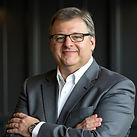


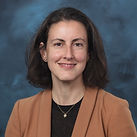
The aviation industry has sustainability as their key criteria for decarbonization, and sustainable synthetic aviation fuels provides the solution, but comes with mandate and cost performance. Some of the cost-performance benefits are incorporated in the recent passage of the One Big Beautiful Bill (OBBBA) which includes reducing purchase price through tax incentives. There are models developed to show importance of biofuels with petroleum supply chain disruptions. We will hear from experts in sustainable synthetic aviation fuels about their strategies for sustainability, compliance, and role biofuels can play to mitigate petroleum supply chain disruptions.
Tuesday, November 18, 2025
All Track 2 sessions will be held in RiverView 2
Session 5: 1:30 PM to 3:00 PM: Demystifying the Biggest Black Box in SAF: Monetizing Scope 3 Emissions





The SAF industry has spent a great deal of time, money and energy over the past decade progressing SAF feedstocks and production pathways. Similarly, many advances have been made on the policy side, ranging from incentives at the US federal and state levels to mandates in Europe. Yet when SAF producers and investors assess their economics, the biggest unknown -- and perhaps largest source of value -- is the green premium SAF commands over conventional jet fuel. In markets such as the US this “green premium” takes the form of “SAFc,” the monetization of Scope 3 emissions. But how much do we know about this nascent, but critical, space, and how can SAF industry players maximize its value?
Session 6: 3:30 PM to 5:00 PM: Comparison of Sustainable SAF Processes

Moderator: Steve Csonka, Executive Director, Commercial Aviation Alternative Fuels Initiative (CAAFI)
Speakers:




It is considered there are two primary pathways for production of sustainable synthetic aviation fuel (SAF), which are Hydrotreated Esters and Fatty Acids (HEFA) and alcohol to jet (AtJ), the former is more mature and is able to use existing infrastructure, the latter faces challenges related to feedstock availability and cost. There are other pathways which are gradually increasing in popularity, such as Fischer-Tropsch (FT), Power-to-Liquid (PtL), and promising alternatives and hybrids of these pathways. The panelists will present their pathways and challenges and opportunities.
Cesar Granda, VP Technology Innovation & IP, BioVeritas
SAF Unconstrained
While global demand for SAF is skyrocketing, long-term SAF supply is heavily constrained. This is particularly true for HEFA, the most popular commercial pathway today. There are numerous technological and industrial limitations of current SAF production pathways – but there is a promising alternative, The BioVeritas Process™, that is free from these constraints. This process uniquely integrates producing volatile fatty acids (VFAs) by directed mixed-culture fermentation of low-cost, abundant feedstocks, such as unrefined corn dextrose, lignocellulose and other biodegradable wastes and catalytic VFA-to-SAF conversion and can be deployed across two routes to market: as a VFA-SPK SAF blendstock, or as intermediates that can feed directly into HEFA, alleviating its feedstock constraint. The BioVeritas Process™ features feedstock flexibility, energy efficiency, and a superior lifecycle greenhouse gas emissions profile, resulting in low-cost, low-carbon SAF. Moreover, this process lies directly at the intersection of industrial biotechnology, environmental sustainability, and the socio-economic transformation of energy systems, all key subject areas for AFCC. Primary source materials for the presentation will include proprietary data and published material from BioVeritas, as well as published industry reports on SAF capacity, demand, and trajectory. This presentation will be relevant to Program Committee Members due to its focus on a timely industrial challenge with a novel technology supported by data, which has potential implications for reshaping the SAF market.





